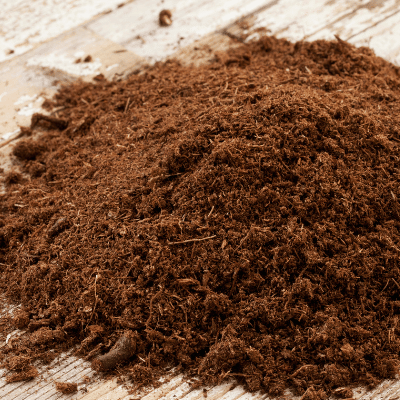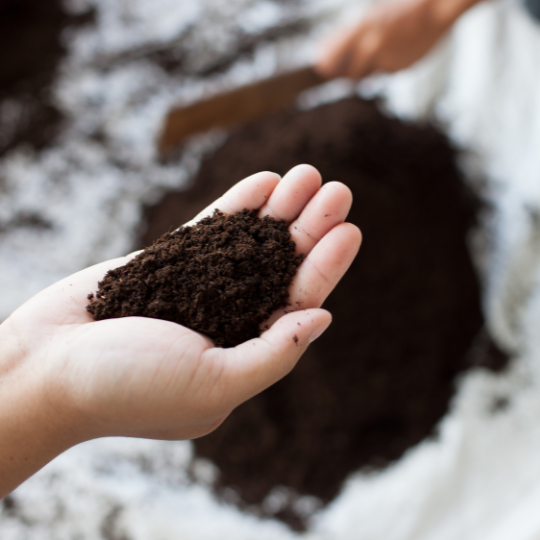
Coir Peat Brick How to Use, are an eco-friendly and adaptable way to improve your gardening projects. These compressed bricks, which are made from coconut husks, have a number of advantages that can greatly enhance your garden’s plant health and soil quality. The secret is knowing how to apply coir peat bricks to different gardening techniques in an efficient manner. First of all, when combined with garden beds, they work wonders as soil conditioners and additives, improving soil structure, water retention, and nutrient availability. Second, coir peat is a great medium for seed beginning because it creates a nutrient-rich, sterile environment that encourages strong seedling growth. Coir peat can also be used as a natural mulch in place of synthetic mulching materials to prevent weed growth, insulate soil, and retain moisture.
Here are 5 creative methods coir peat brick how to use in your garden to their fullest potential:
1. Soil Amendment and Conditioning
Bricks made of coir peat are great for enhancing the fertility and structure of the soil. In order to make good use of them, first soak the brick in water until it swells and becomes workable. Split up the expanded coir peat and well combine it with your planting soil. By improving soil aeration, water retention, and nutrient availability, this procedure creates a favorable environment for the growth of plant roots.

2. Medium for Seed Starting
Coir peat and vermiculite or perlite can be combined to make a nutrient-rich seed starting mix. Coir peat’s light weight and sterility make it the perfect medium for seed germination. Pour the coir peat mixture into seed trays or pots, plant your seeds at the indicated depth, and maintain the medium evenly moist. Strong seedling growth is encouraged by this technique, which also lowers the chance of fungal illnesses.
3. Grass cutting and weed control
To retain moisture, inhibit the growth of weeds, and insulate soil, use coir peat as a natural mulch. To stop stem rot, cover plants with a layer of coir peat, making sure to leave a space around the stem. As coir peat mulch decomposes over time, it enriches the soil with organic matter and strengthens its structure. Additionally, it serves as a barrier against weeds, minimizing evaporation and lowering the need for frequent weeding.
4. Composting Booster
Add some coir peat to your compost pile to quicken the composting process. The nitrogen-rich components commonly present in kitchen scraps and green trash are counterbalanced by its high carbon content. To encourage microbial activity and speed up decomposition, shred or crumble coir peat brick how to use into your compost pile or bin. The resulting compost is a great organic fertilizer for your garden plants because it is full of nutrients.

5. Growing Media with Hydroponics
Coir peat brick how to use are a useful growing medium for those who enjoy hydroponic gardening. After giving the enlarged coir a thorough rinse to get rid of any extra salt, use it as a substrate for plant roots in hydroponic systems. In nutrient-rich hydroponic solutions, coir peat supports healthy root development by retaining moisture well and offering good aeration. It’s a more environmentally friendly option than conventional hydroponic medium like perlite or rockwool.
To sum up, adding coir peat brick how to use to your gardening practice has numerous advantages for the environment and plants. You may improve the fertility and structure of your soil and provide the best possible development conditions for your garden plants by using them as soil conditioners. Strong seedling establishment is ensured by their effectiveness as a seed starting medium, and their use as mulch inhibits weeds while preserving soil moisture, which is essential for sustainable gardening techniques.
Furthermore, by adding essential nutrients to compost, coir peat bricks quicken the composting process and encourage the establishment of healthy plants and soil. Last but not least, their applicability in hydroponic systems highlights their versatility by offering plant roots in nutrient-rich fluids a natural and efficient substrate. Gardeners who use coir peat bricks not only improve their gardening skills but also support environmentally responsible methods that put sustainability and healthy soil first, guaranteeing a more green future for both gardens and landscapes.
In conclusion, if you are eager to delve deeper into the details of coir products, feel free to explore our website at www.bertwin.com.au. Additionally, for direct and instant connection with our team, you can reach us through the following WhatsApp link here. We look forward to providing you with the information and assistance you need.
